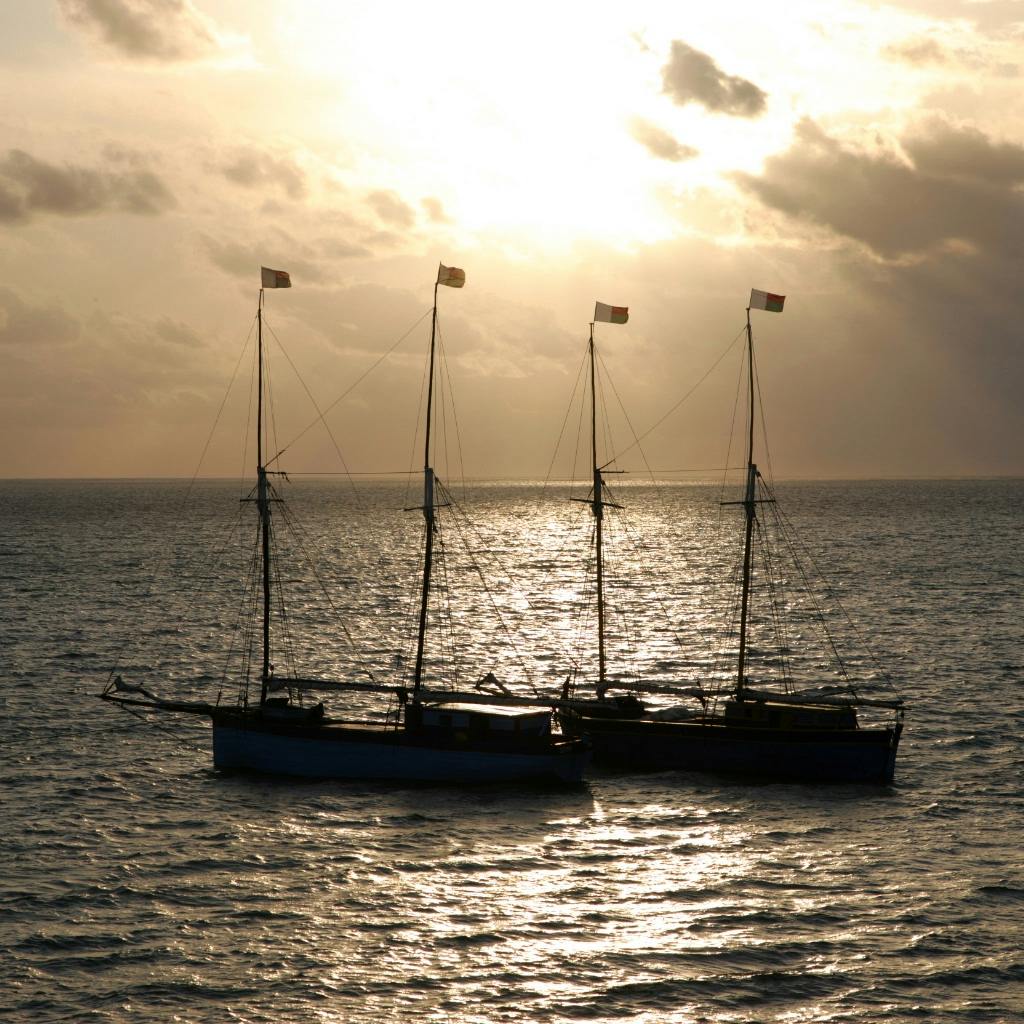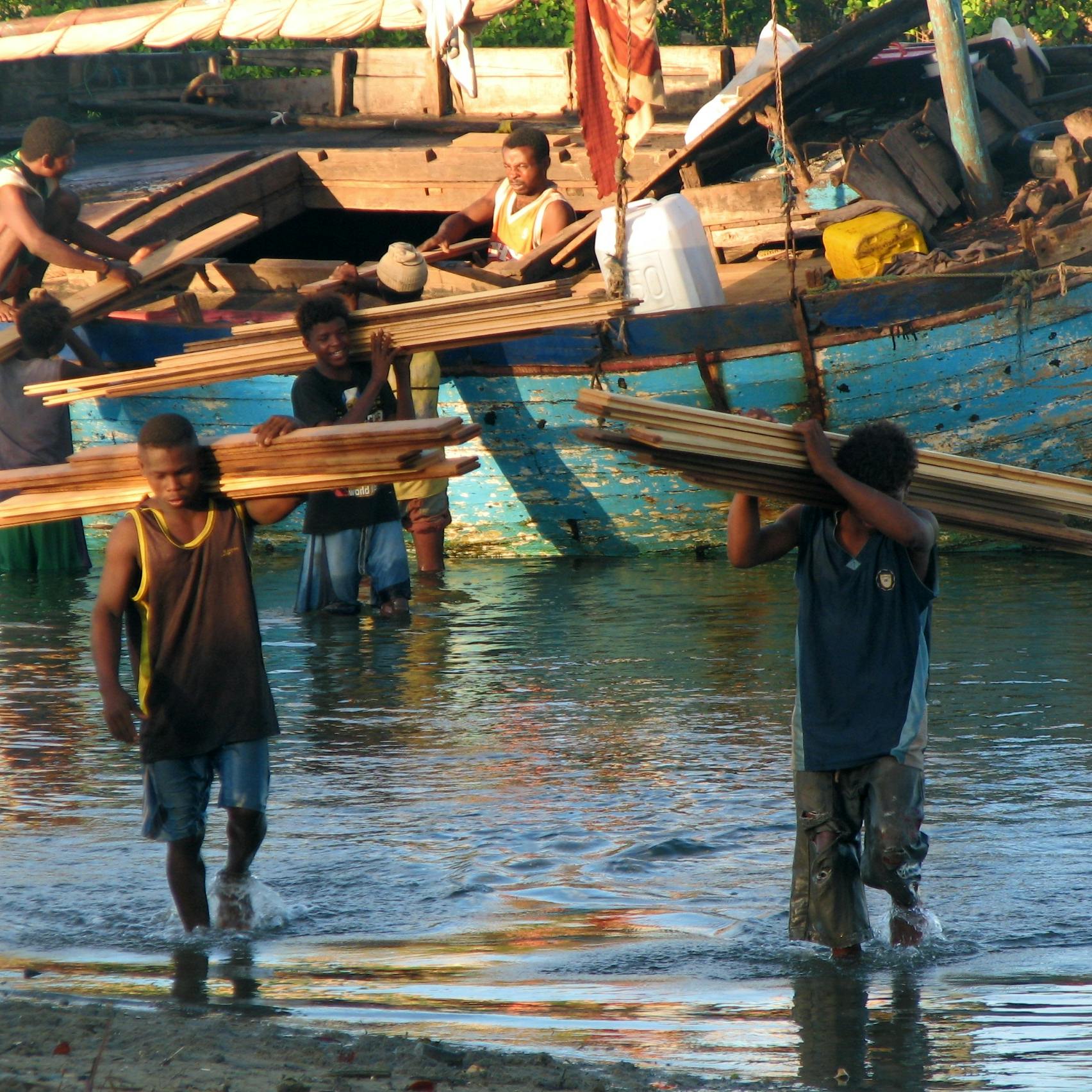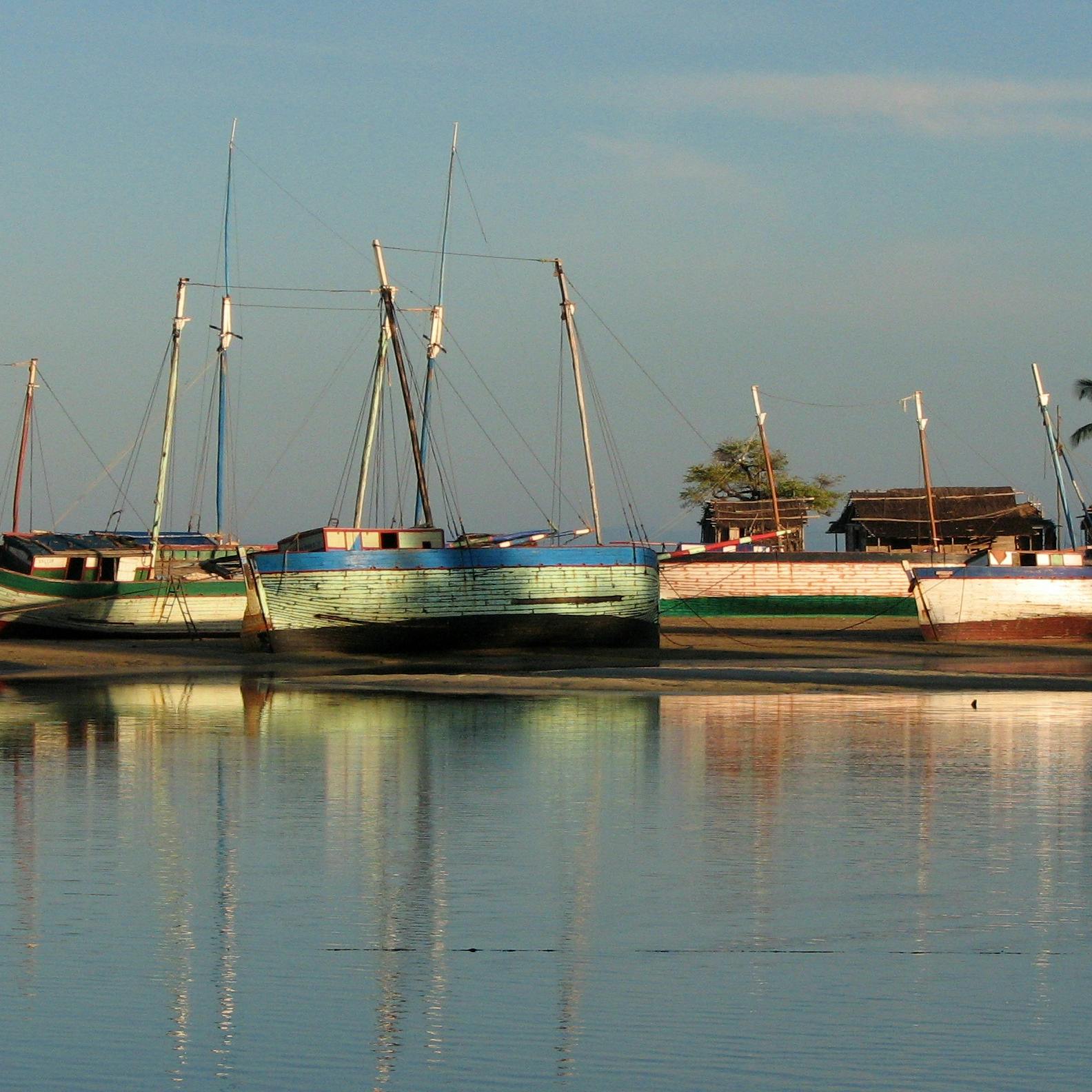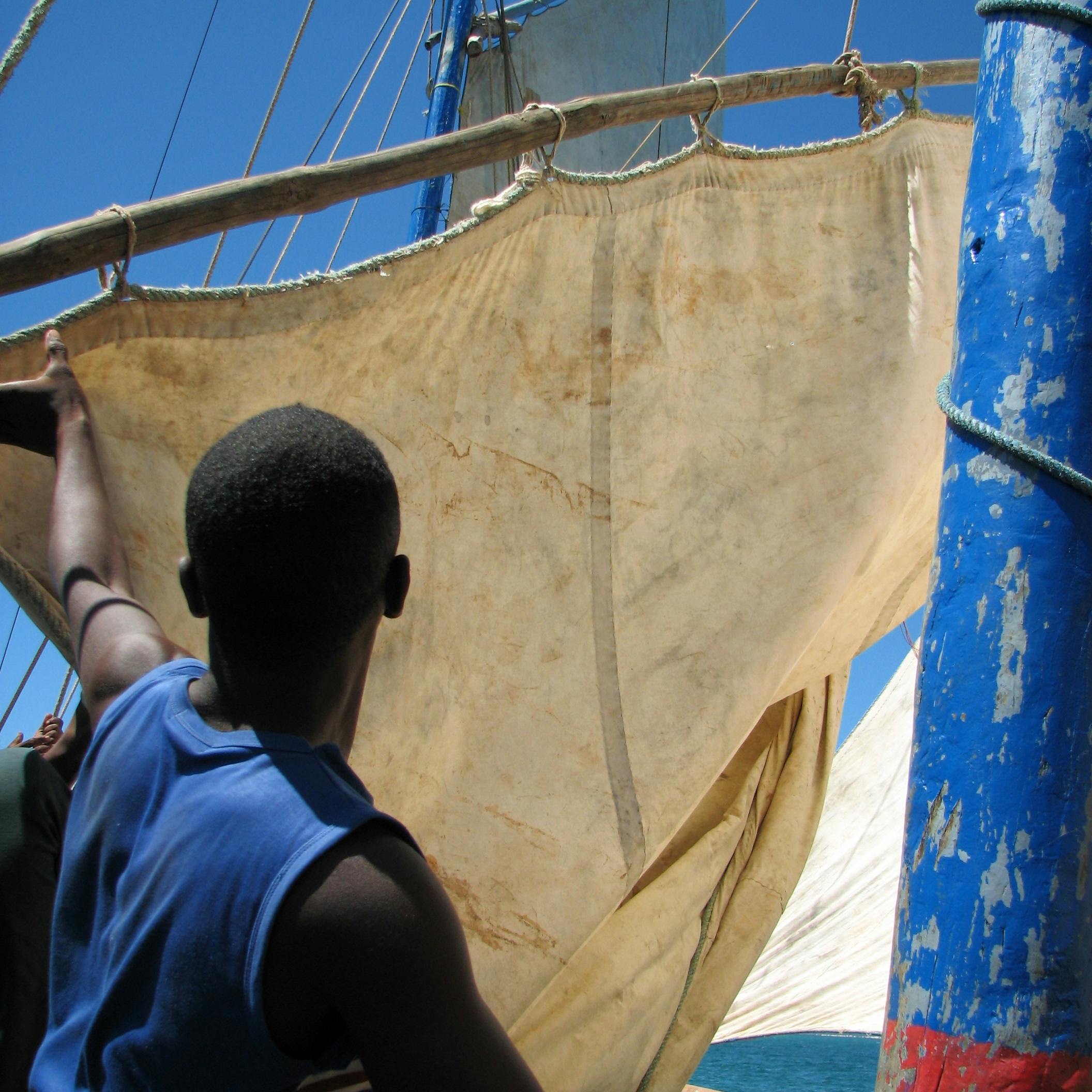History of Breton Schooners on the West Coast of Madagascar
The western coast of Madagascar, between Toliara (Tulear) and Mahajanga, is crisscrossed year-round in both directions by a fleet of nearly 200 botry (dhows, in Malagasy) which are actually Breton schooners




History of the Schooner
These small, sleek and elegant sailing vessels, invented by the Dutch in the 17th century, reached their glory days in the second half of the 18th century when the shipbuilders of Fécamp and Paimpol adopted them for coastal trade between Bordeaux and Nantes, but especially for cod fishing off the coast of Newfoundland. From there, they spread to the East Coast of the United States in the 19th century, before later becoming an emblematic figure of sport sailing. In Madagascar, one of the last places in the world where they can still be found (at least in such large numbers), they transport everything needed, from salt to cement, rice and beer, supplying coastal villages, especially when the wet season makes the tracks impassable. It was around the middle of the 19th century that the history of the Malagasy schooner began, when the Merina king Radama II opened the country to vazaha (whites), encouraging them to engage in certain economic activities likely to promote the island's development. It was at this time that the Joachim family, father Enasse and his three sons Ludovic, Albert and Fernand, Bretons established since the late 18th century in Reunion, decided to try their luck in Madagascar, where they arrived around 1863. But Radama II's open policy was already so strongly criticized on the island that the king was assassinated a few months later, to be replaced under the name Ranavalona II by his wife who declared a hunt for foreigners. The Joachims had to flee, and their trail is lost between Madagascar and Reunion over the next two decades. In 1888, two of Enasse's sons, Ludovic and Albert, regained a foothold in Tulear, and after several years of wandering between this city and Morombé, settled in 1904 in Morondava, in Menabe, where they set up a shipyard. At the same time, Albert, Bebea in Malagasy (for Bébert), obtained permission and even a small subsidy from the colonial authorities to open a school for shipbuilders, which he established in Belo-sur-Mer, just under a hundred kilometers south of Morondava, near forest resources guaranteeing the supply of rare woods sought for shipbuilding. The village, populated by Vezo fishermen with their famous single-outrigger canoes, and entirely turned towards the sea, would find in the manufacture of schooners its second vocation. Bebea then integrated into the local population, of which some of his descendants are still part, and at his death in 1932 was buried on site. Today, 5 families of carpenters perpetuate the tradition, building botry in Belo as Albert Joachim taught, passing down from generation to generation a true technical know-how. Building and sailing a Malagasy schooner. The Malagasy schooner is a decked sailboat with shallow draft, whose foremast, placed forward of the mainmast, is slightly shorter or equal in size, and whose sails, called 'gaff-rigged', are placed along the axis of the vessel. It is claimed that the term schooner, given by 18th-century Bretons, comes from the word seagull, in reference to the lightness of the boat. Easy to maneuver, it is particularly suited to coastal trading, which is its exclusive use in Madagascar.
Construction and Navigation
The construction of a botry actually spreads according to the financial resources of the client, and can generally take 1 to 2 years. The size of fishing catches, which is the main activity locally, actually decides the speed of progress on the construction site. Everything in the schooner is made by hand, with only the hammer, saw, axe, adze, clamp, square, pin and a kind of plane said to have been brought by the Joachims as tools. The fifty or so trees used to make a botry of about a hundred tons include 4 or 5 species all of local origin, nato for the ribs, anakary, tainakanga and katrafay for the sternpost, keel and mast. Until the middle of the 20th century, the hull was caulked with oakum waterproofed with euphorbia resin mixed with sand, a recipe later replaced by simple tar. The launching, like certain phases of the schooner's construction, is always accompanied by ritual ceremonies to guarantee the vessel's future buoyancy. It takes a crew of 4 to 6 people to guide these Malagasy schooners, ranging in length from 12 to 20 m (with an average of 15). The temptation to increase the useful volume compared to the Joachims' initial plans to enable them to transport more has made them increasingly pot-bellied, improving their stability in this calm sea at the expense of their draft and therefore their maneuverability. One only needs to see them maneuver to approach the Morondava pass to get an idea of the difficulty of piloting as soon as they have to cross the bar, or even a simple big wave. Coastal shipping contracts give a little more than a third of the total price of the trip to the owner, who provides the boat while bearing all its maintenance and repair costs, the rest being divided between the captain, who provides meals (tea and salted rice), his second and the 2 or 3 sailors who handle the sails. Before worms gradually destroy it, our schooner has about twenty years ahead of it. The morning ballet of schooners leaving the port of Morondava at the very moment when the outrigger canoes return has a magical, somewhat anachronistic side. One could almost believe oneself transported to the 18th century on a Caribbean shore visited by slave traders. Experts have long been predicting the inevitable end of this traffic from another century that nevertheless persists. Even if the pace of production is decreasing, the construction of Madagascar's botry, of which about twenty are still made each year, remains current. But it is under strong pressure from 2 opposing phenomena. The economic crisis that the Great Island is experiencing, first of all, is certainly not likely to make people prefer other means of transport that consume fossil fuels whose cost of use would be prohibitive given the living standards of the relatively isolated villages of western Madagascar. Undoubtedly, the transport of products by schooner may seem long by current standards, but it allows the rural population to be supplied with basic commodities at an unbeatable price, wind and labor being among the cheapest inputs locally. As long as these conditions, and those of dramatic underdevelopment, persist, it will be difficult to do without the botry. Except that today, an entirely ecological limit is slowing the future development of this traditional activity. The low durability of the ships, which maintains the activity of the shipyards, leads to a heavy toll on the most precious species of the surrounding forests. The classification of the Kirindy-Mite forest as a national park no longer authorizes - in principle - these withdrawals today, which locals consider legitimate, but which forest and environmental law subjects to rules that make their exploitation practically impossible. This clearly means that the woods used by Belo's shipbuilders are currently being used illegally, which - whatever the conditions of evolution - does not guarantee a great future for the sector. Is the Belo botry destined to disappear this time?
